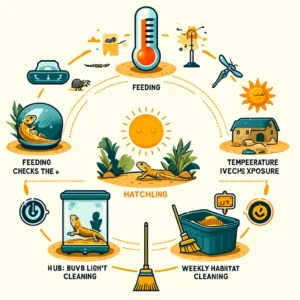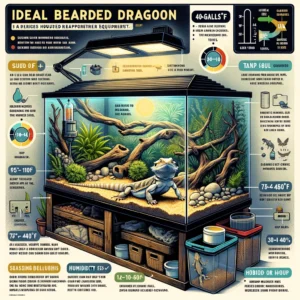Caring for newborn bearded dragons, or hatchlings, is a delicate task that requires attention to detail and a comprehensive understanding of their needs. Below, we break down the essential aspects of newborn bearded dragon care into easy-to-understand components.
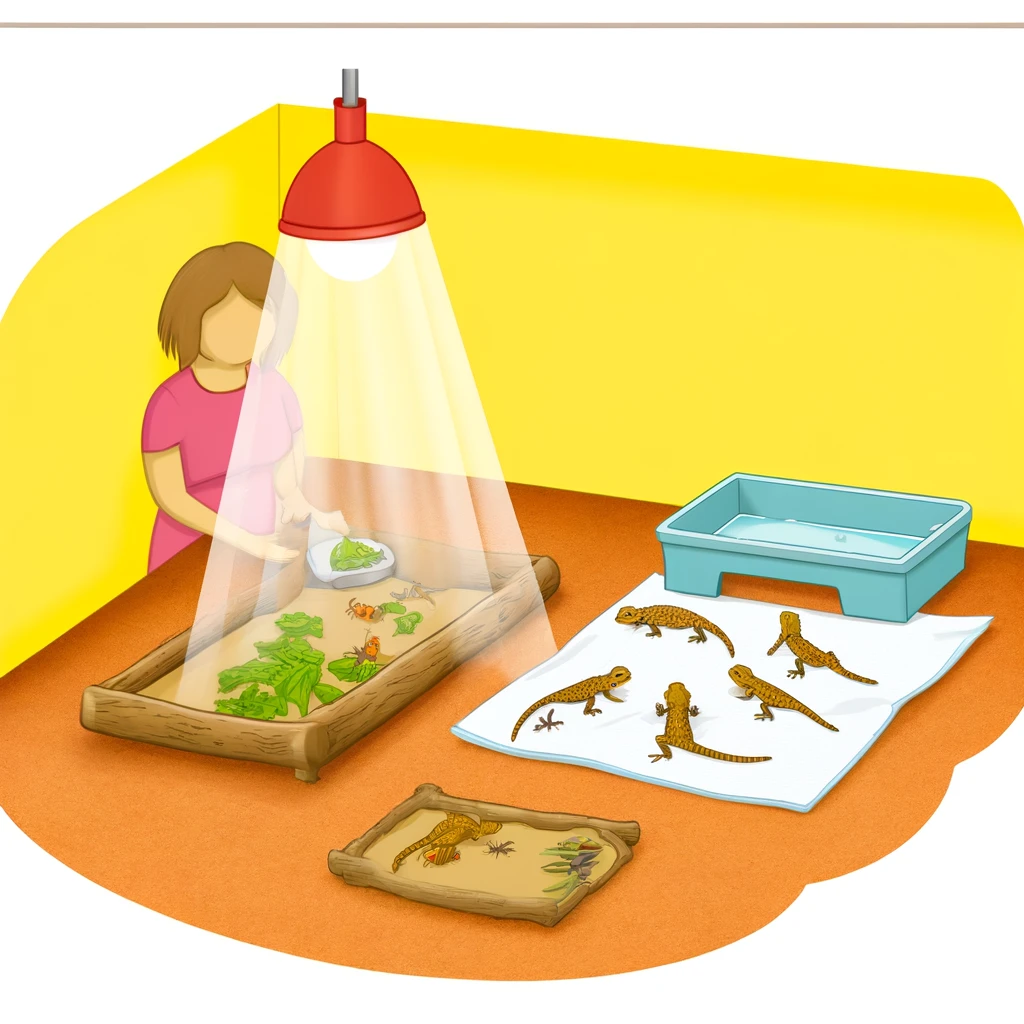
Creating a Suitable Habitat
When setting up a habitat for newborn bearded dragons, it’s important to ensure that the environment is safe, comfortable, and conducive to their growth.
| Feature | Description | Specification |
|---|---|---|
| Enclosure Size | A 20-gallon tank is sufficient for hatchlings. | 20 gallons |
| Temperature | A gradient from 95°F in the basking area to 85°F elsewhere. | Basking: 95°F, General: 85°F |
| Lighting | Provide UVA/UVB lighting essential for growth. | 12-14 hours per day |
| Humidity | Maintain lower humidity levels to mimic arid habitats. | 30-40% |
| Substrate | Use paper towels or reptile carpet to prevent impaction. | Non-loose substrate |
| Decor | Include hiding spots and low climbing structures. | Safe and easy to navigate |
Feeding Your Newborn Bearded Dragon
Feeding newborn bearded dragons is critical, as their diet supports their rapid growth during the first few months of life.
Diet Composition
- Insects: Offer small crickets or dubia roaches dusted with calcium powder.
- Greens: Introduce finely chopped greens like dandelions and arugula.
- Frequency: Feed them multiple times a day due to their high metabolism.
Hydration
- Provide a shallow dish of water, though most hydration will come from their food.
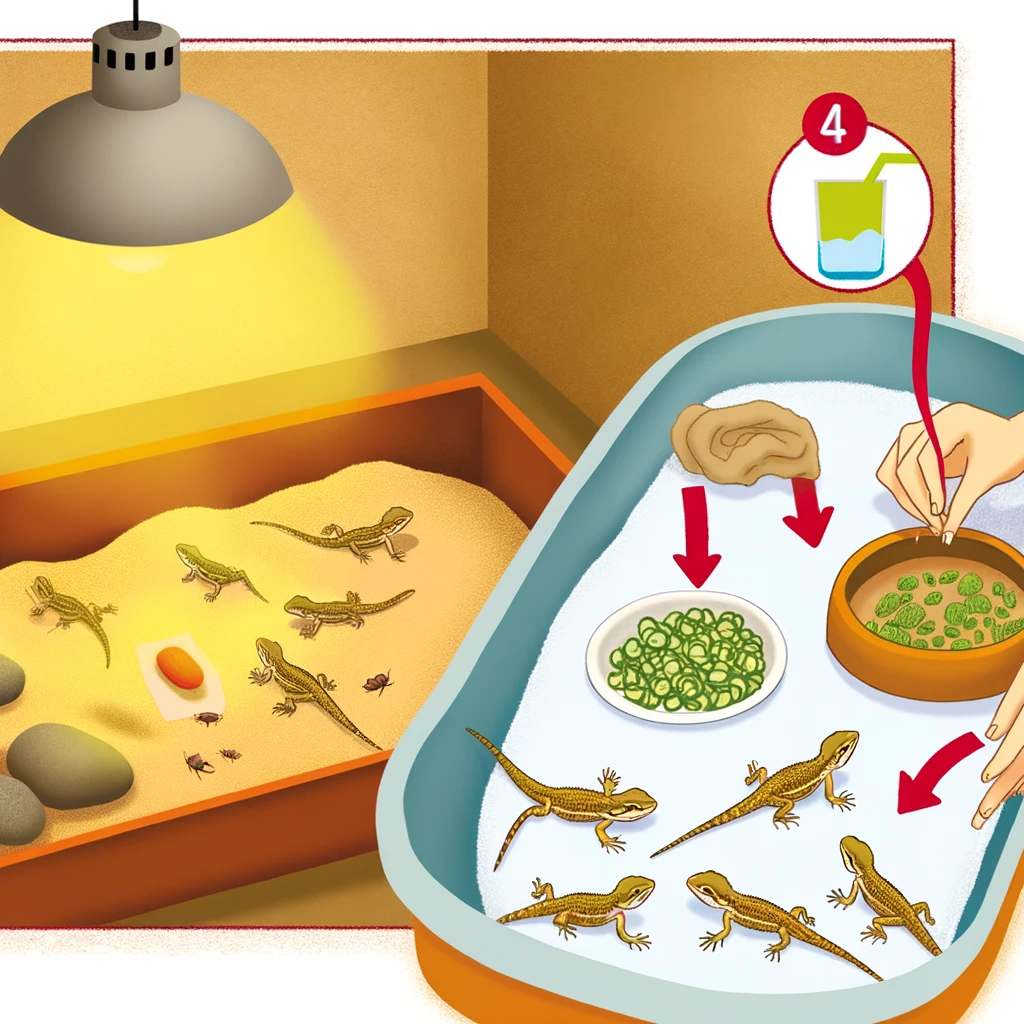
Health Monitoring
Regular check-ups with a reptile veterinarian are essential for monitoring the health of newborn bearded dragons.
Signs of Good Health
- Active and alert behavior.
- Clear eyes and smooth skin.
- Regular eating and defecation patterns.
Warning Signs
- Lethargy or lack of appetite.
- Sunken eyes or wrinkled skin.
- Abnormal feces or lack of bowel movements.
Handling and Socialization
Gentle handling for short periods helps in socializing newborn bearded dragons.
- Start with short sessions of about 5 minutes.
- Gradually increase the handling time as they grow and become more comfortable.
Maintenance and Cleaning
Keeping the habitat clean is crucial to prevent the spread of bacteria and maintain a healthy living environment.
- Daily: Remove waste and uneaten food.
- Weekly: Clean and disinfect the tank and furnishings.
- Monthly: Conduct a thorough cleaning of the entire enclosure.
Caring for newborn bearded dragons is a rewarding experience that sets the foundation for their future health and happiness. With the right habitat, diet, health care, socialization, and maintenance, your newborn bearded dragons can grow into healthy and content adult pets.
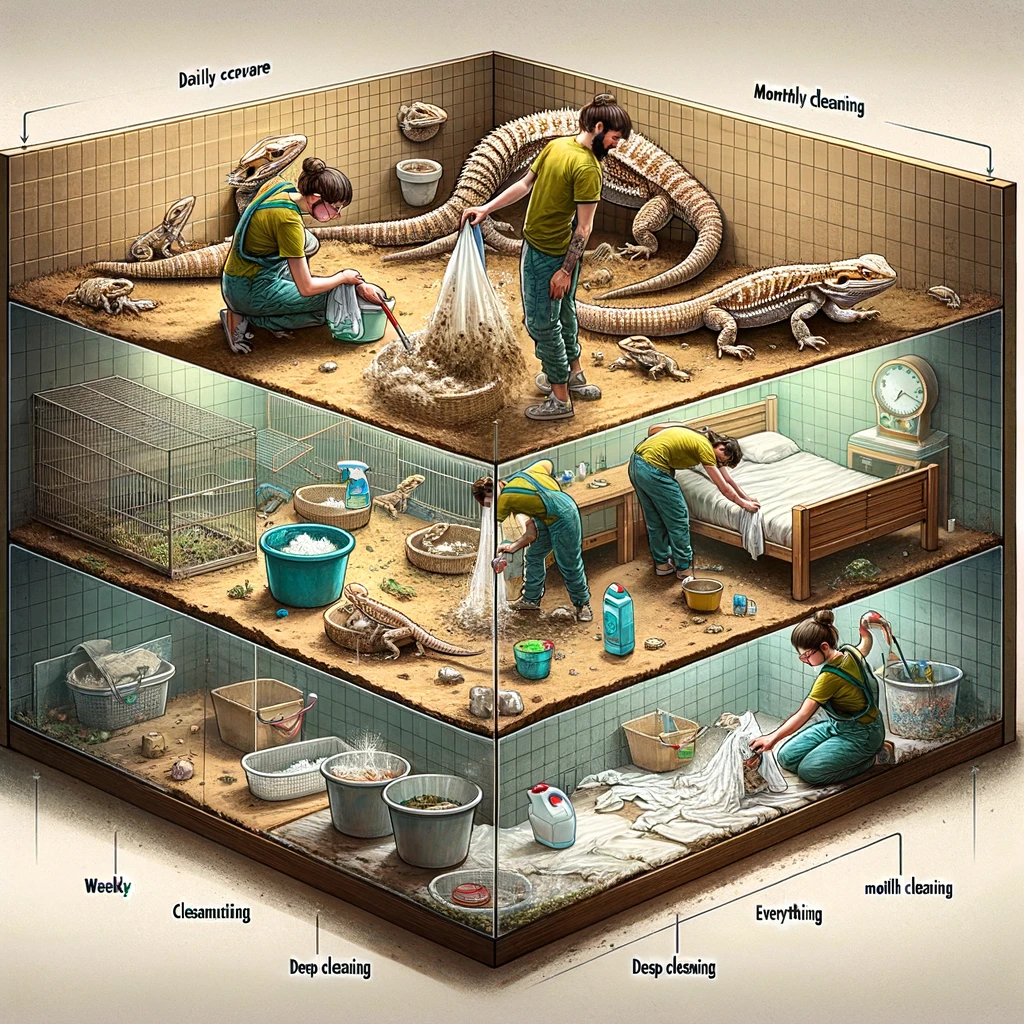
FAQs:
What do newborn bearded dragons eat?
Newborn bearded dragons start with a diet of small insects like pinhead crickets and tiny mealworms. It’s essential to offer food that is no larger than the space between their eyes to prevent choking. Alongside insects, you can introduce finely chopped leafy greens and vegetables. Feed them 2-3 times a day and ensure fresh food at each feeding.
How often should I feed my newborn bearded dragon?
Feed your newborn bearded dragon 2-3 times a day. Young dragons have high metabolic rates and require frequent feedings of small insects and vegetables to support their rapid growth.
What is the ideal temperature and humidity for a newborn bearded dragon’s habitat?
The basking area should be between 95-110°F (35-43°C), while the cooler end of the enclosure should be around 85°F (29°C). At night, temperatures can drop to 70-75°F (21-24°C). Maintain the humidity levels between 20-40% to mimic their natural arid environment. Use a reliable thermometer and hygrometer to monitor these conditions.
How do I ensure my newborn bearded dragon is hydrated?
Offer fresh, clean water daily in a shallow dish. Additionally, you can gently mist your bearded dragon and its habitat to encourage drinking. Some may prefer to lick water droplets from surfaces or their skin.
What kind of substrate is best for newborn bearded dragons?
For newborns, it’s safer to use paper towels, newspaper, or reptile carpet as these options reduce the risk of impaction from accidental ingestion of loose substrates. Avoid sand and small gravel until they are older.
How much handling is safe for newborn bearded dragons?
Initially, limit handling to a few minutes at a time to reduce stress. Gradually increase handling time as they get accustomed to human interaction. Ensure your hands are clean and handle them gently to build trust.
How do I recognize if my newborn bearded dragon is healthy?
A healthy newborn bearded dragon should be alert, active, and have a good appetite. Its skin should be clear of wounds and blemishes, and its eyes bright and clear. Signs of illness may include lethargy, lack of appetite, abnormal feces, or visible injuries.
When should I take my newborn bearded dragon to a vet?
Schedule a veterinary check-up soon after acquiring your bearded dragon to establish a health baseline. Afterwards, seek veterinary care if you notice signs of illness such as prolonged lethargy, lack of appetite, unusual feces, or difficulty breathing. Regular check-ups can help ensure your bearded dragon remains healthy.
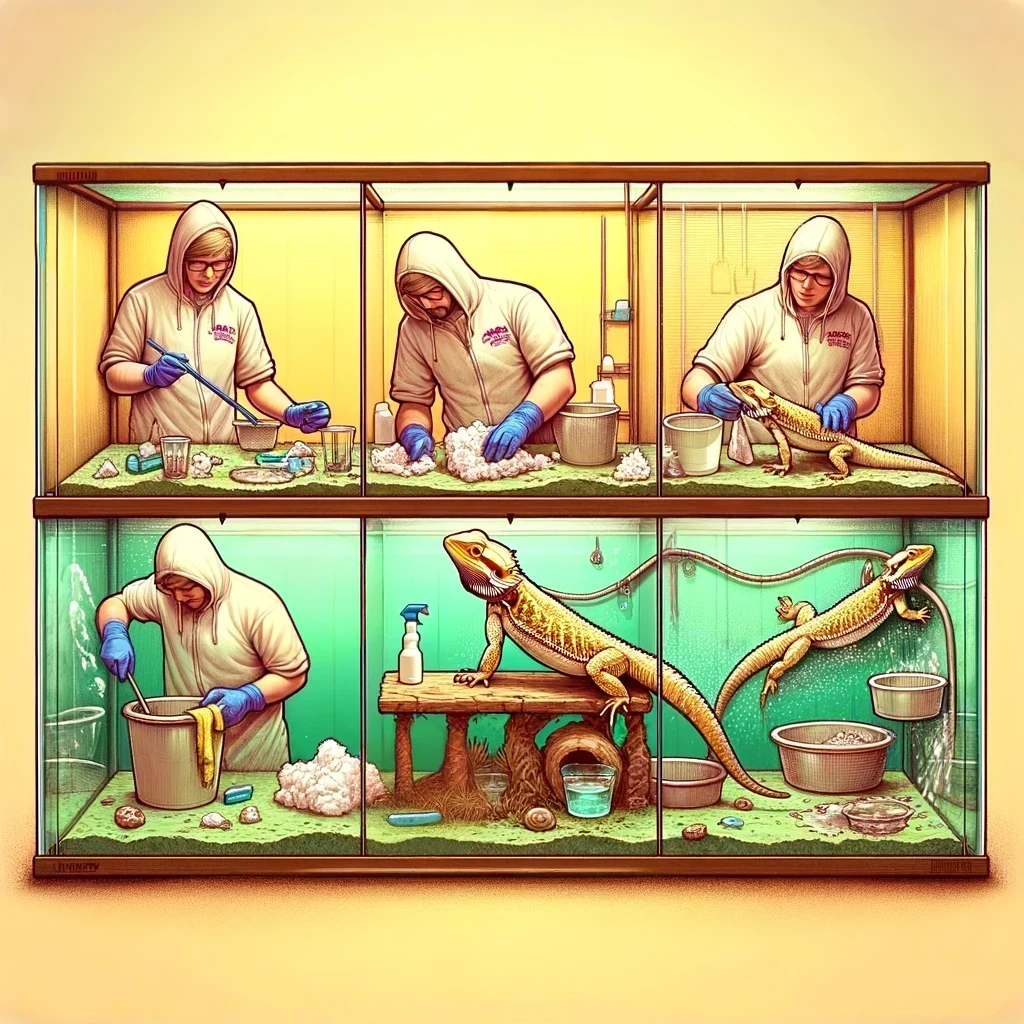

Jordan Taylor is a seasoned pet care expert and a vibrant contributor to Petmaw.com. With over a decade of experience in veterinary science, Jordan brings a wealth of knowledge and a deep passion for animals to every article. After earning a degree in Veterinary Medicine from the University of Alaska Anchorage, Jordan spent several years working in a busy veterinary clinic, where they honed their skills in pet nutrition, behavior, and wellness.
Jordan’s love for animals isn’t just professional; it’s a fundamental part of their life. Home is shared with three rescue Sloth, two cats, and a small flock of backyard chickens, each with their own rescue story and special place in Jordan’s heart. This personal connection to animals shines through in Jordan’s writing, making their advice not only expert but also empathetic and practical for pet owners.
At Petmaw.com, Jordan is dedicated to providing pet owners with the latest research, trends, and tips in pet care, from innovative feeding strategies to understanding the subtle signs of pet health issues. Whether you’re a seasoned pet owner or new to the pet parenting world, Jordan’s insights aim to enhance the well-being of pets and deepen the human-animal bond.
In their spare time, Jordan is an avid hiker, often found exploring the trails with their dogs. They also volunteer at local animal shelters, offering their expertise and helping animals in need find forever homes. Jordan’s commitment to animal welfare and passion for sharing knowledge makes them a cherished member of the Petmaw.com family and a trusted guide for our readers.


